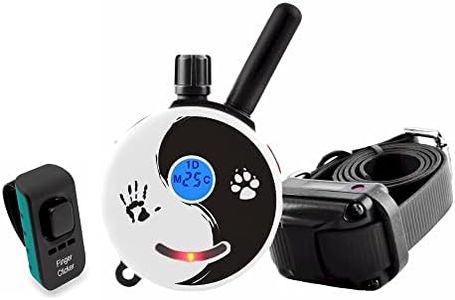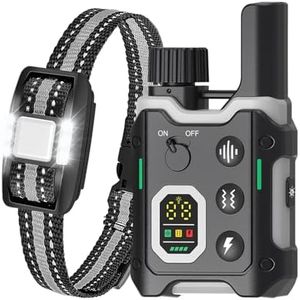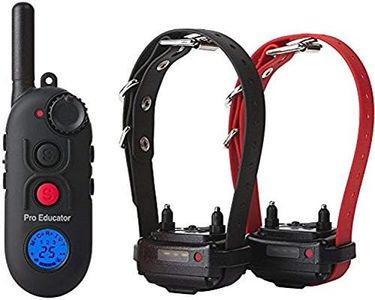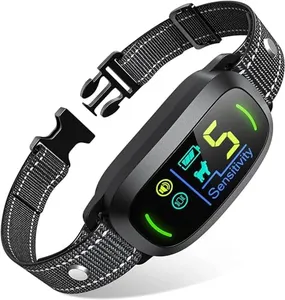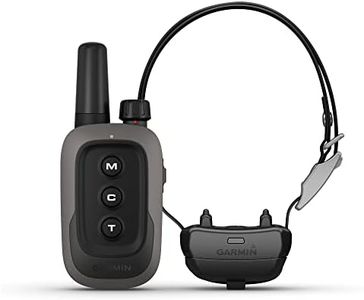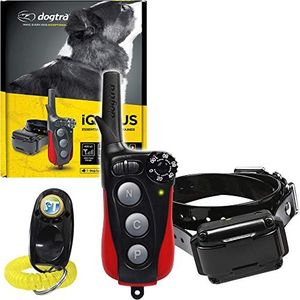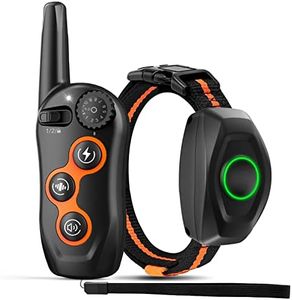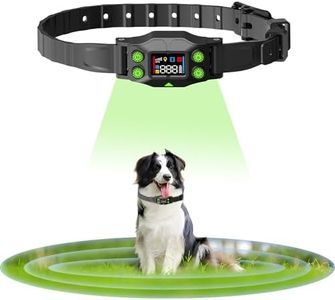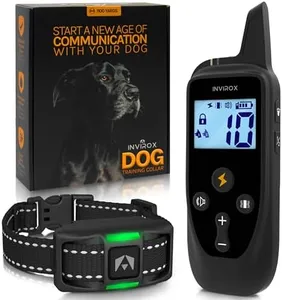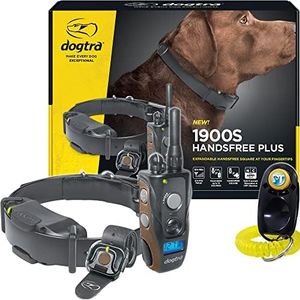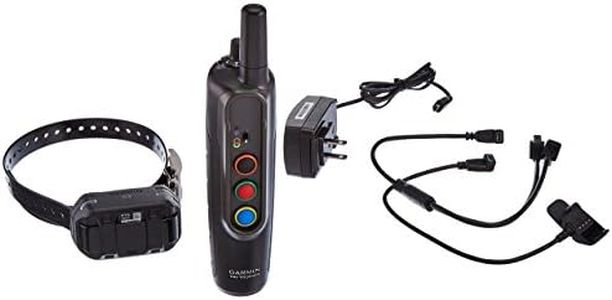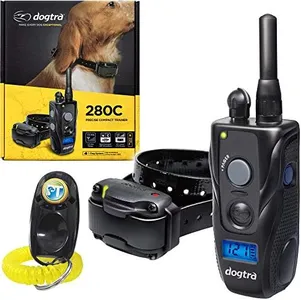We Use CookiesWe use cookies to enhance the security, performance,
functionality and for analytical and promotional activities. By continuing to browse this site you
are agreeing to our privacy policy
10 Best Shock Collars
From leading brands and best sellers available on the web.Buying Guide for the Best Shock Collars
Choosing a shock collar for a dog should be a thoughtful process with the primary focus on the well-being and safety of your pet. It's important to understand that shock collars are training tools and should be used responsibly and as a last resort, usually after trying positive reinforcement methods. When picking a shock collar, you need to make sure it fits your dog's size, temperament, and your specific training needs, while always prioritizing humane settings and proper use.Stimulation LevelsStimulation levels refer to the range of shock intensity the collar can deliver, from mild vibration or beep to stronger electrical pulses. This is important because it allows you to adjust the correction to suit your dog's sensitivity and the training situation. Collars with more levels give you finer control, helping you provide the mildest correction necessary. If your dog is small or timid, you’ll want a collar with very gentle settings. A higher range might be suited for larger, more stubborn dogs, but for any dog, always start at the lowest setting and increase only if needed.
Modes of OperationShock collars often offer different modes, such as beep, vibration, and static shock. These modes are important because they let you use non-shocking corrections like sound or vibration before resorting to a shock. For many dogs, sound or vibration is enough to stop unwanted behavior, making training more humane. Consider a collar with multiple modes so you can match your approach to your dog’s temperament and sensitivity.
RangeThe range is how far the remote will work from the collar, typically measured in yards or meters. This matters because if you plan to train your dog in large open spaces, you’ll need a longer range, whereas for backyard use or indoor training, a short range will do. Think about where you’ll use the collar most often—choose a range that comfortably covers your needs without picking one that’s far more than you’ll ever use.
Collar Adjustability and SizeThe adjustability and size of the collar ensure a proper fit for your dog’s neck, which is vital for safety and comfort. Collars that are too tight can cause discomfort or injury, while loose collars may not work correctly. Measure your dog’s neck and make sure the collar is adjustable to fit snugly without being restrictive. This is especially important for growing puppies or very small breeds.
Battery Life and RechargeabilityBattery life refers to how long the collar and remote will last before needing a recharge or a new battery. Reliable battery life is crucial so the collar is always ready when you need it and doesn’t die mid-training. Rechargeable collars can be more convenient and eco-friendly, while those with replaceable batteries might be handy if you’re away from a charging source. Consider how often you’ll use the collar and choose accordingly.
WaterproofingA waterproof collar means it can withstand rain, puddles, and even swimming. This is important if your dog is active outdoors or likes to play in wet conditions. Waterproof models are generally safer and more reliable in unpredictable environments. Consider your dog’s habits—if they get wet often, a fully waterproof collar is a good idea.
Safety FeaturesSafety features may include automatic shut-off, lock settings, or warning signals to prevent accidental or continuous shock. These are vital to protect your dog from harm and to make sure you remain in control at all times. Look for collars with built-in limits so even if you’re distracted, the collar can’t over-correct your dog. Always prioritize your pet’s safety by choosing a collar designed to prevent misuse.

